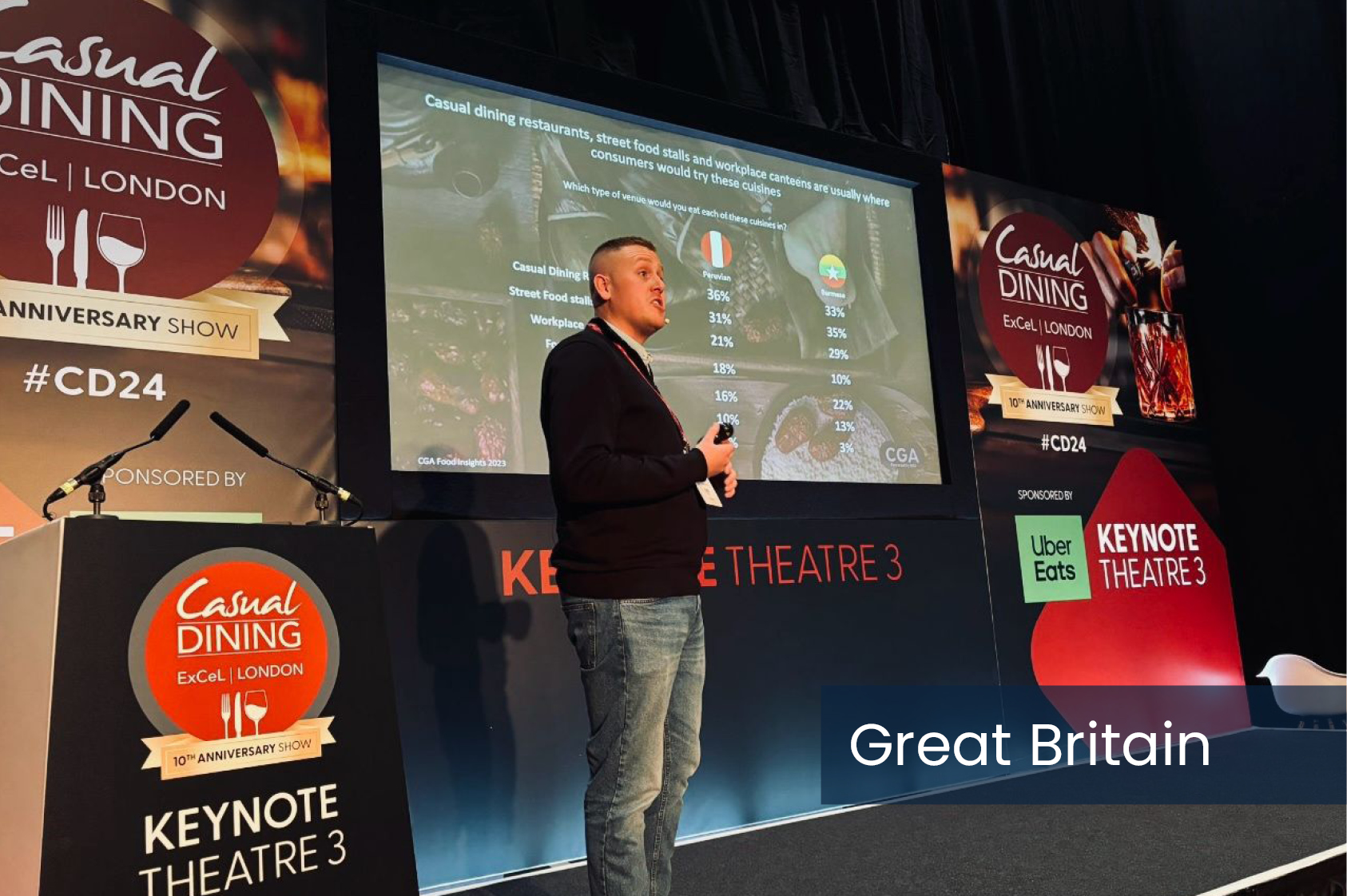CGA by NIQ’s hospitality operators and food director, Karl Chessell, and client business partner Andy Hodgson delivered exclusive data and insights at the Casual Dining show.

Here are ten of Andy’s top insights from their presentation:
1 Outlet closures have slowed down
There’s been a steady stream of closures in hospitality since the start of the COVID-19 pandemic—but we might be entering a new phase of recovery. The latest Hospitality Market Monitor from CGA and AlixPartners shows a loss of 969 sites in the 12 months to July, but the last quarter brought net growth of 48 casual dining restaurants and 102 other restaurants.
2 There’s solid year-on-year growth
Like-for-like sales at Britain’s top managed groups have been resilient lately, and the CGA and RSM Hospitality Business Tracker has shown growth in all but two of the last 15 months. There’s also cautious hope about the future, and 36% of leaders told CGA’s latest Business Confidence Survey that they’re optimistic about the market over the next 12 months, while only 21% are pessimistic. Drops in foodservice price inflation and energy costs have helped to fuel confidence.

3 Consumers are visiting less but spending more
Many British consumers are continuing to feel the effects of the cost of living crisis, and the number who eat out weekly has fallen from 49% in 2019 to 38% in 2024. Footfall has dropped in late-night markets in particular, as people bring forward their meals and drinks. But although people going out less, they’re spending more when they do so—an average of £23.17 per head this year.
4 Asian cuisine is flourishing
Some cuisines are performing better than others. Sales growth has been much higher in Asian restaurants, with brands including Dishoom, Mowgli, Pho, Rosa’s and Giggling Squid expanding rapidly. These restaurants are also attracting a higher average spend than segments like Italian.
5 Value means much more than cheap
The cost of living crisis has focused people’s minds on the cost of their meals. But only 14% of consumers associate value for money with cheapness, and far more think it means something that is worth its cost (41%) or of good quality (38%). CGA’s BrandTrack research also shows how quality closely correlates with freshness, generosity, passion and authenticity. If restaurants can deliver all these, guests are much more likely to feel they’re getting great value for money.
6 Diners want new experiences
While restaurants remain the most visited channel for food-led occasions, CGA’s Food Insights report highlights the growing popularity of other formats like street food stalls and markets. There is also demand for new food types, with Peruvian, Burmese and Cuban the three cuisines that consumers would most like to try.
7 There’s room for innovation in traditional channels
As well as new experiences, consumers like modern twists on old favourites. Deep-fried lasagne from Detroit Pizza London and savoury doughnuts at Tipo are two examples, and CGA’s Hot Beverages Report has highlighted the emergence of drinks like hot milkshakes and nitro brews.
8 Indulgence and impulse drive desserts
Innovation also appeals in desserts. More than half (53%) of consumers—and 70% of 18 to 34 year-olds—find fusion desserts like cronuts or cookie pizza appealing. Treats and impulse are two big purchase drivers here: a third (34%) say the idea of deserved indulgence makes them more likely to buy desserts, and 43% will order them impulsively most or all of the time.
9 Competitive socialisers can be big spenders
The rising popularity of competitive socialising brings a great chance to sell more food. People visiting these types of venues spend an average of £27.61 a head on food—£3.71 more than the average.
10 Food is a big part of high tempo occasions
Although high tempo On Premise occasions tend to be drink-led, there is room to grow food sales in this segment. Nine in ten (90%) consumers have food at some point during these visits, and they spend significantly more than average on food at occasions like bottomless brunches and themed events.
CGA’s powerful combination of sales measurement and consumer research helps suppliers and operators understand these and many more dynamics in out-of-home food. The upcoming ‘Food Insights Report 2024’ explores the ever-changing out-of-home food market, help brands to navigate market challenges, stay ahead of emerging trends, and build winning sales strategies using a data-driven approach. Ready to enhance your strategy with the CGA by NIQ Food Insights series? Contact the team here.



